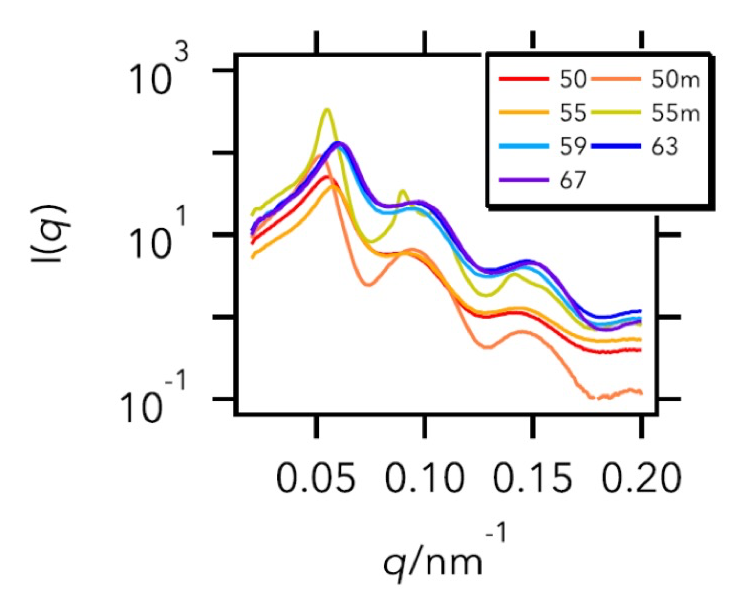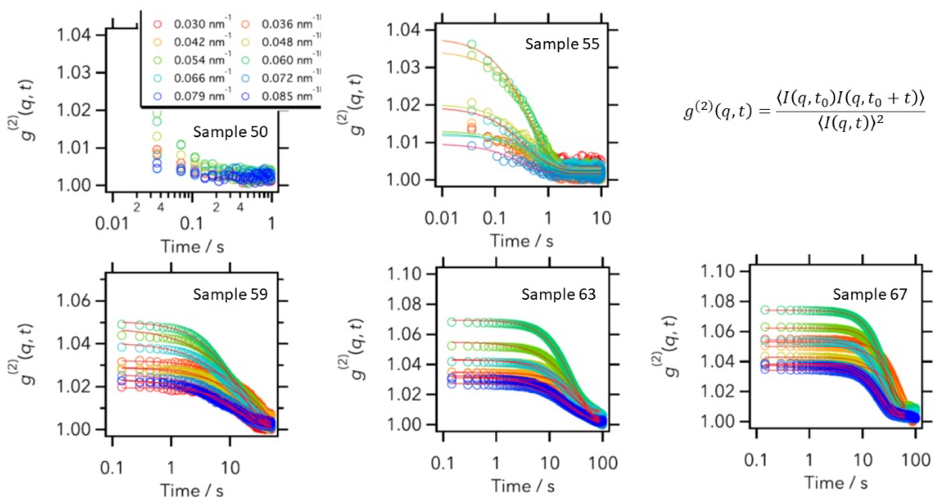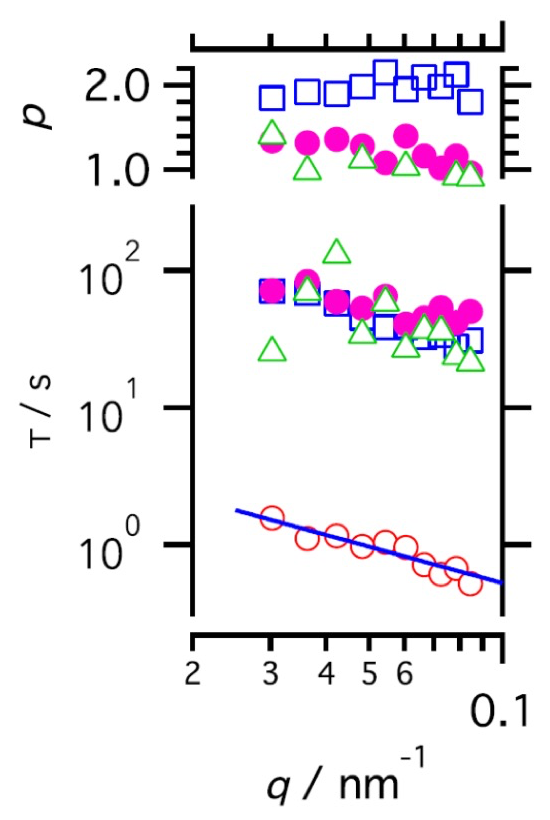Volume7 No.2
SPring-8 Section A: Scientific Research Report
XPCS Study of PMMA/Polystyrene Immersed in Cis-Decalin
1 Oak Ridge National Laboratory, 2 University of Tennessee
- Abstract
-
Rheology of colloidal suspensions is of considerable interest for scientific as well as technological reasons. The nature of interparticle interactions determines the colloidal structure and hence the flow behavior of suspensions. There has been much interest in controlling the colloidal rheology through altering the interparticle forces. By introducing smaller particles into a suspension of large colloidal particles, the pressure of the small particles produces an additional attractive force between the colloids. This is referred to as the depletion force. [1] Existing experimental studies have demonstrated the profound influence of depletion forces on the deformation behavior of colloidal suspensions. [2] The goal of this project is to carry out an x-ray photon correlation spectroscopy (XPCS) study to understand the dynamical perspective of this phenomenon.
キーワード: Short-range attraction, colloids, XPCS
XPCS measurements were carried out at BL40XU, SPring-8 to explore the dynamical characteristics of poly(methyl methacrylate) (PMMA) particles suspended in cis-Decalin. Samples containing 50 wt%, 55 wt%, 59 wt%, 63 wt%, and 67 wt% PMMA in cis-decalin were prepared. Linear polystyrene (PS) chains were used as the depletion agents. A Linkam cell was used to accommodate the samples. The PMMA particles and PS chains were synthesized at the Center of Nanophase Materials Sciences (CNMS), in the Oak Ridge National Laboratory (ORNL). The diameter of the PMMA colloids and the radius of gyration of PS were 200 nm and 20 nm respectively. The molecular weight of PS is 164 kg/mol. The weight fraction ratio between PMMA and PS was kept at a constant value of 10. The scattered photons were collected using an x-ray image intensifier developed for XPCS [3] + C4880-80 (Hamamatsu Photonics, Ltd., Japan). The X-ray energy was 10.5 keV and the distance between the sample and the detector was 3 m, which was calibrated using the diffraction pattern of SiN grating (pitch: 100 nm).
In Figure 1 we present the elastic small angle x-ray scattering (SAXS) spectra. These intensity profiles are calculated from speckle patterns. The range of coherent scattering is q < 0.1 nm-1 and the scattering images are suffered from image distortion of the detector. Nevertheless we found the influence of this spectral distortion on data analysis is negligible. The measured  are presented in Figure 2.
are presented in Figure 2.
Figure 1. SAXS spectra of cis-decalin solutions of PMMA/PS. The PMMA weight fraction is ranging from 50 wt% to 67 wt%. The weight fraction ratio of PMMA to PS is 10. ‘m’ in the legends indicates the solutions are consisting of PMMA and cis-decalin only.
Figure 2. The measured  of PMMA/PS solutions with different weight fractions.
of PMMA/PS solutions with different weight fractions.
We have extracted the relaxation time from the decays of the measured  as a function of q and present the result in the right panel of Figure 3. It is found that the
as a function of q and present the result in the right panel of Figure 3. It is found that the  functions of the sample with 67 wt% of PMMA shows compressed exponential behavior while others show conventional relaxation. The origin of this observation could be attributed to the enhancing many-body interaction. Because within this accessed q range the collected information is dominated by the collective diffusivity, the observed q-dependence of relaxation time for sample 67 indicates that the observed mutual dynamics is not simple diffusive one but super diffusive one.
functions of the sample with 67 wt% of PMMA shows compressed exponential behavior while others show conventional relaxation. The origin of this observation could be attributed to the enhancing many-body interaction. Because within this accessed q range the collected information is dominated by the collective diffusivity, the observed q-dependence of relaxation time for sample 67 indicates that the observed mutual dynamics is not simple diffusive one but super diffusive one.
Figure 3. The relaxation time as a function of q for solutions of PMMA/PS with different weight fractions. Open circles, tringles, squares and closed circles are results from Sample 55, 59, 63 and 67 respectively.  is modeled as
is modeled as  .
.
The dynamic information obtained from this experiment provides an initial clue revealing how the interplay between the depletion force and excluded volume effect influences the long-time dynamic properties, such as the static viscosity. With this experimental input, we are conducting the parallel rheological assessments and computational studies to address the dependence of macroscopic deformation behaviors of colloidal suspensions on their microscopic structure and dynamics.
References:
[1]: S. Asakura, F. Oosawa, J. Chem. Phys. 22 1255 (1954).
[2]: H. N. W. Lekkerkerker, R. Tuinier, Colloids and the Depletion Interaction, Springer; (2011).
[3]: Y. Shinohara, et al., J. Synchrotron Rad. 17, 737 (2010).
(Received: March 30 2019; Accepted: July 16, 2019; Published: August 29, 2019)










